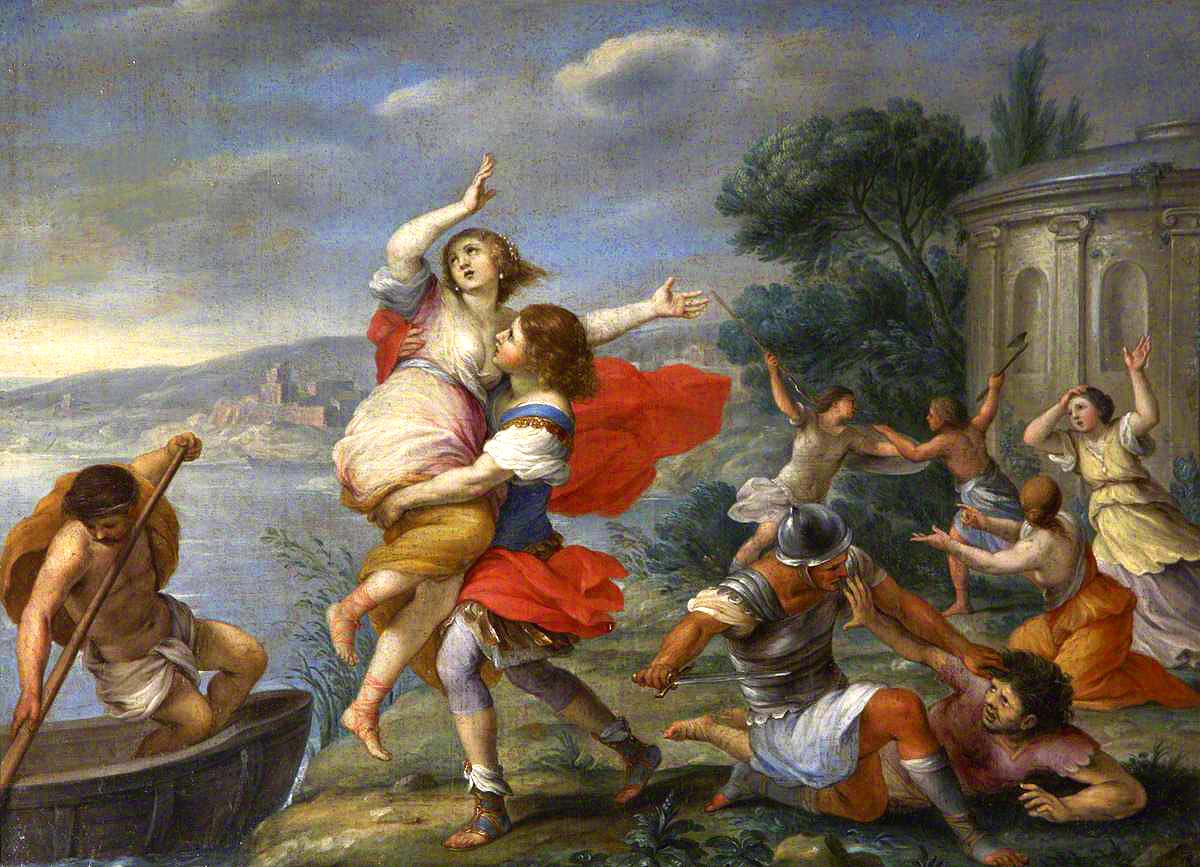Theseus
The Athenian Mythological Hero and His Feats, Including His Confrontation with the Minotaur

Theseus emerged as the most important mythical hero of Attica. Some say that his father was Poseidon, while others believe it was Aegeus, the king of Athens. His mother was Aethra, daughter of King Pittheus of Troezen.
The hero was born in Troezen and spent his childhood there. His father ruled in Athens but feared having Theseus close to him, as he worried that his enemies would kill him. When Aegeus left Troezen for Athens, he hid his sandals and sword under a rock and instructed Aethra to inform Theseus to come and meet him only when he was capable of lifting the rock and retrieving the sandals and sword.

From a young age, Theseus stood out for his strength and bravery. When he turned sixteen, his mother led him to the rock, which he easily moved. After retrieving the hidden items, he set out on his journey to Athens. During his journey, he performed many heroic deeds. He killed Periphetes in Epidaurus, who killed passersby with his heavy club, and kept this weapon. He then confronted Sinis the Pine Bender, who tied travelers' feet to two trees and then released them, causing a gruesome death. He also killed the Crommyonian Sow, a wild boar that wreaked havoc in the Megarid region. He freed the area from Sciron, who threw people into the maw of a giant man-eating turtle. Theseus killed him in the same manner. He also faced Cercyon in Eleusis, defeated, and killed him. In the same place, he confronted Damastes or Procrustes and killed him as well.
When he reached the banks of the Cephisus River, Theseus was purified of his murderous deeds and entered Athens. There he discovered that his father had married the sorceress Medea for a second time. Medea immediately recognized Theseus and feared that her son would lose his succession to the throne to Theseus. For this reason, she convinced Aegeus, who had not realized that Theseus was his son, to poison him. However, at the crucial moment, Theseus revealed the sword from its sheath, and his father recognized him by the weapon, ultimately banishing the sorceress from Athens.
From then on, the hero began to support his father in maintaining his power, eliminating the Bull of Marathon, which caused immense destruction in Attica. This was the bull that Heracles had brought from Crete to Argolis and, after numerous adventures, found itself in Marathon. Additionally, he emerged victorious against the Pallantides, the nephews of Aegeus, who continually claimed the throne. He freed the Athenians from the dreadful tribute they were forced to pay to the king of Crete, Minos. This tribute was imposed because Minos's son, Androgeos, had lost his life in Attica, resulting in the Athenians being obliged to send seven young men and seven young women to Crete each year. All of these were sacrificed in the labyrinth as food for the Minotaur.

Theseus traveled to Crete to free Athens from this unjust tribute. There, he met Minos' daughter, Ariadne, who fell in love with Theseus. Because of this, she helped him in his mission by giving him a ball of thread, which Theseus unraveled behind him as he progressed through the labyrinth, along with the other thirteen future victims
After killing the Minotaur, Theseus used the thread (mitos) again to find the exit from the labyrinth and immediately left Crete. He took Ariadne with him. However, he abandoned her on Naxos, either because he handed her over to the god Dionysus, or because he fell in love with Aegle. When they reached Delos, the festival of Apollo, the Apollonia, was celebrated, and there Theseus danced the crane dance with his companions. The intricate movements of the dance mimicked the adventure of entering and exiting the labyrinth.

They then began their journey back to Athens. Upon their return from Crete, the ship had black sails, symbolizing mourning for the youths who had been lost. Theseus had agreed with Aegeus that if the mission was successful, they would replace the black sails with white ones. However, Theseus forgot to change them. Thus, the king thought that his son and the youths had died at the hands of the Minotaur. In his despair, Aegeus jumped into the sea and drowned. From that moment, this sea has been called the Aegean Sea.

Theseus succeeded his father on the throne and united all the regions of Attica, founding the city of Athens. He established the Panathenaia and annexed Megara to his kingdom, founding the Prytaneum and the Boule. He also participated in many contests, such as the hunt for the Calydonian boar and Jason and the Argonauts. He helped Heracles in the battle against the Amazons and abducted one of them, Antiope. However, this act led the Amazons to attack Attica. Theseus confronted and defeated them at Pnyx. From Antiope, he had a son, Hippolytus. Later, he married Phaedra, with whom he had Acamas and Demophon.
In his later years, Theseus helped his friend Pirithous, leader of the Lapiths, in the battle against the Centaurs. Then, the two friends abducted the beautiful Helen, who was later freed by her twin brothers Castor and Pollux, the Dioscuri of Sparta. They also attempted to abduct Persephone from the Underworld, but Hades captured and chained them to a rock. There, Pirithous remained bound forever, while Theseus was freed with the help of his friend, Heracles.

When the hero returned to Athens, he faced the usurper Menestheus, who had seized the throne. Theseus was forced to take refuge at the court of the king of Scyros, Lycomedes, who later killed Theseus by throwing him from a high cliff.
In Athens, Theseus was considered a hero, and his adventures became the subject of all the arts. He is depicted beardless as one of the greatest heroes of Greek mythology, holding a club or sword, symbolizing courage, intelligence, and adventure.
